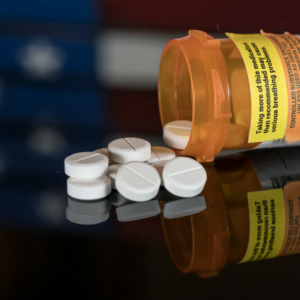by Gabriel Levitt, President, PharmacyChecker.com and Prescription Justice | Mar 29, 2018 | Politics and policy
 The recently signed appropriations or “omnibus” bill to fund the federal government includes an additional $94 million (Section 778) for the FDA to screen and stop drug imports at international mail facilities (IMFs). That could mean fewer people receiving their prescription medications that they have ordered from Canadian or other international pharmacies.
The recently signed appropriations or “omnibus” bill to fund the federal government includes an additional $94 million (Section 778) for the FDA to screen and stop drug imports at international mail facilities (IMFs). That could mean fewer people receiving their prescription medications that they have ordered from Canadian or other international pharmacies.
As I wrote a couple of weeks ago, the FDA’s coming crackdown against opioids could be a cover for greater import refusals and destruction of imported medications. This new appropriation of $94 million is a lot of money. In the case of drug importation, that money could be used for good (intercepting opioid ingredients en route to drug dealers or addicts) or evil (refusing and destroying prescribed medication en route to a patient who can’t afford the drug here).
You can read the section of the bill showing the appropriation and what it’s for at the end of this post. It states that the money is for “necessary expenses of processing opioid and other articles imported or offered for import through international mail facilities of the U.S. Postal Service.” Those “other articles” include prescription medications from pharmacies in Canada and other countries. Since the FDA considers those imports illegal, at least under most circumstances, it can refuse them and even destroy them – but must first alert the patient who ordered them giving them due process to defend their prescription order. (more…)
Tagged with: counterfeits, drug imports, FDA, international mail facilities, omnibus, opioids, Scott Gottlieb
by Gabriel Levitt, President, PharmacyChecker.com and Prescription Justice | Mar 16, 2018 | FDA enforcement
 As reported by the Associated Press, FDA Commissioner Scott Gottlieb announced a plan earlier this month to stop imports of opioid drugs by doubling the number of inspectors at international mail facilities. This type of targeted enforcement against opioid drug products is the stuff of real public health protection, but it can easily be misused to refuse online pharmacy orders of prescription medication imports. Millions of Americans are ordering medications from abroad because they cannot afford the exorbitant prices here in the United States. Prescription medication orders from licensed pharmacies in Canada and other countries should not be conflated with illegal importation of opioids.
As reported by the Associated Press, FDA Commissioner Scott Gottlieb announced a plan earlier this month to stop imports of opioid drugs by doubling the number of inspectors at international mail facilities. This type of targeted enforcement against opioid drug products is the stuff of real public health protection, but it can easily be misused to refuse online pharmacy orders of prescription medication imports. Millions of Americans are ordering medications from abroad because they cannot afford the exorbitant prices here in the United States. Prescription medication orders from licensed pharmacies in Canada and other countries should not be conflated with illegal importation of opioids.
(more…)
Tagged with: 708, drug imports, FDA, international mail facilities, opioids, Scott Gottlieb
by Gabriel Levitt, President, PharmacyChecker.com and Prescription Justice | Mar 9, 2018 | Drug Safety
 According to a new study, it turns out that, potentially, millions of people should have been prescribed over-the-counter drugs—not addictive narcotics. That’s a major finding considering 600,0000 Americans have died from drug overdose between 1999-2016. The Journal of the American Medical Association (JAMA) study shows that over-the-counter medications, such as ibuprofen, acetaminophen, aspirin and naproxen may work better than the hard, addictive stuff, such as Vicodin, Oxycontin, and Fentanyl.
According to a new study, it turns out that, potentially, millions of people should have been prescribed over-the-counter drugs—not addictive narcotics. That’s a major finding considering 600,0000 Americans have died from drug overdose between 1999-2016. The Journal of the American Medical Association (JAMA) study shows that over-the-counter medications, such as ibuprofen, acetaminophen, aspirin and naproxen may work better than the hard, addictive stuff, such as Vicodin, Oxycontin, and Fentanyl.
We recognize and respect the role that properly prescribed prescription narcotics have played and will continue to play in pain management. However, we also believe that Big Pharma makers and sellers of opioids caused this national crisis of drug addiction by helping to create looser prescribing rules. In other words, while at one-time opioid medications were viewed as a last resort to treat serious pain, drug companies pushed medical education that led to the prescribing of opioid drugs. The U.S. Centers for Disease Control and Prevention has revised its guidelines to encourage far tighter prescribing practices, but, as this study indicates, their revisions came way too late.
Patients Who Took Opioids
The JAMA study looked at 248 patients with varying levels of pain, back pain being the most prevalent form affecting 65% of patients. Others had pain associated with hip, knee and that associated with osteoarthritis. One group of patients were prescribed opioid medications. They started with fast acting morphine, a combination of hydrocodone and acetaminophen, or oxycodone. Long acting medications, morphine or oxycodone, were used when the short acting treatments were not working. When those did not work, fentanyl patches were prescribed.
Patients Who Took Non-opioids
Another group took NSAIDs. If NSAIDs did not work, then the group took other prescription medications, such as gabapentin (Neurontin) or pregabalin (Lyrica). If those didn’t work, then tramadol, which is an opioid-based painkiller but less addictive than the ones in the opioid group.
Results of the Study
Patients in the non-opioid group reported equal or better results in pain alleviation than patients in the opioid group. Admittedly, I’m confused because tramadol was in the non-opioid group, even though it’s an opiate-based medication. Also, one shortcoming variable of the study is that patients knew what medications they were taking, which could have biased their reporting.
Overall, the study strongly demonstrates that millions who were prescribed strong opioid drugs and became hooked could just as well have been treated initially with regular OTC pain medications. Not surprisingly, patients could have also saved billions of dollars over the last few decades by taking aspirin instead of brand-name prescription opioids.
This has really caught my attention because the industry-funded groups like the Alliance for Safe Online Pharmacies and Partnership for Safe Medicines equates importation from Canada with the opioid crisis. Instead of urging people to seek alternatives to opioids, the pharmaceutical industry propagates the senseless idea that increasing imports of lower cost (non-pain) medications from Canada will worsen the opioid crisis. They would rather point fingers than address the sickness of their complicity in creating the drug addiction crisis in the first place.
Tagged with: Alliance for Safe Online Pharmacies, CDC, JAMA, NSAIDs, opioids, OTC, Partnership for Safe Medicines
 The recently signed appropriations or “omnibus” bill to fund the federal government includes an additional $94 million (Section 778) for the FDA to screen and stop drug imports at international mail facilities (IMFs). That could mean fewer people receiving their prescription medications that they have ordered from Canadian or other international pharmacies.
The recently signed appropriations or “omnibus” bill to fund the federal government includes an additional $94 million (Section 778) for the FDA to screen and stop drug imports at international mail facilities (IMFs). That could mean fewer people receiving their prescription medications that they have ordered from Canadian or other international pharmacies.



